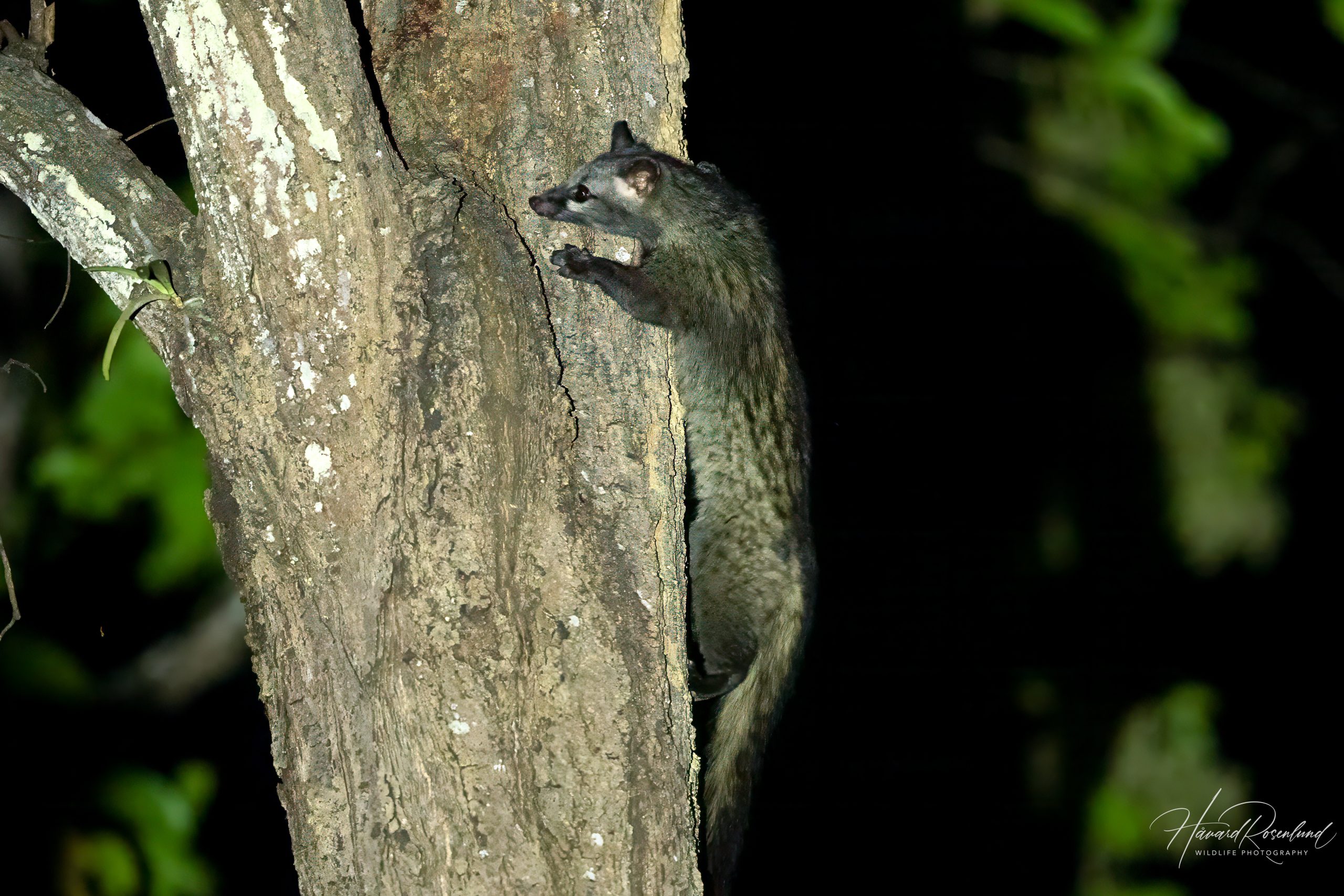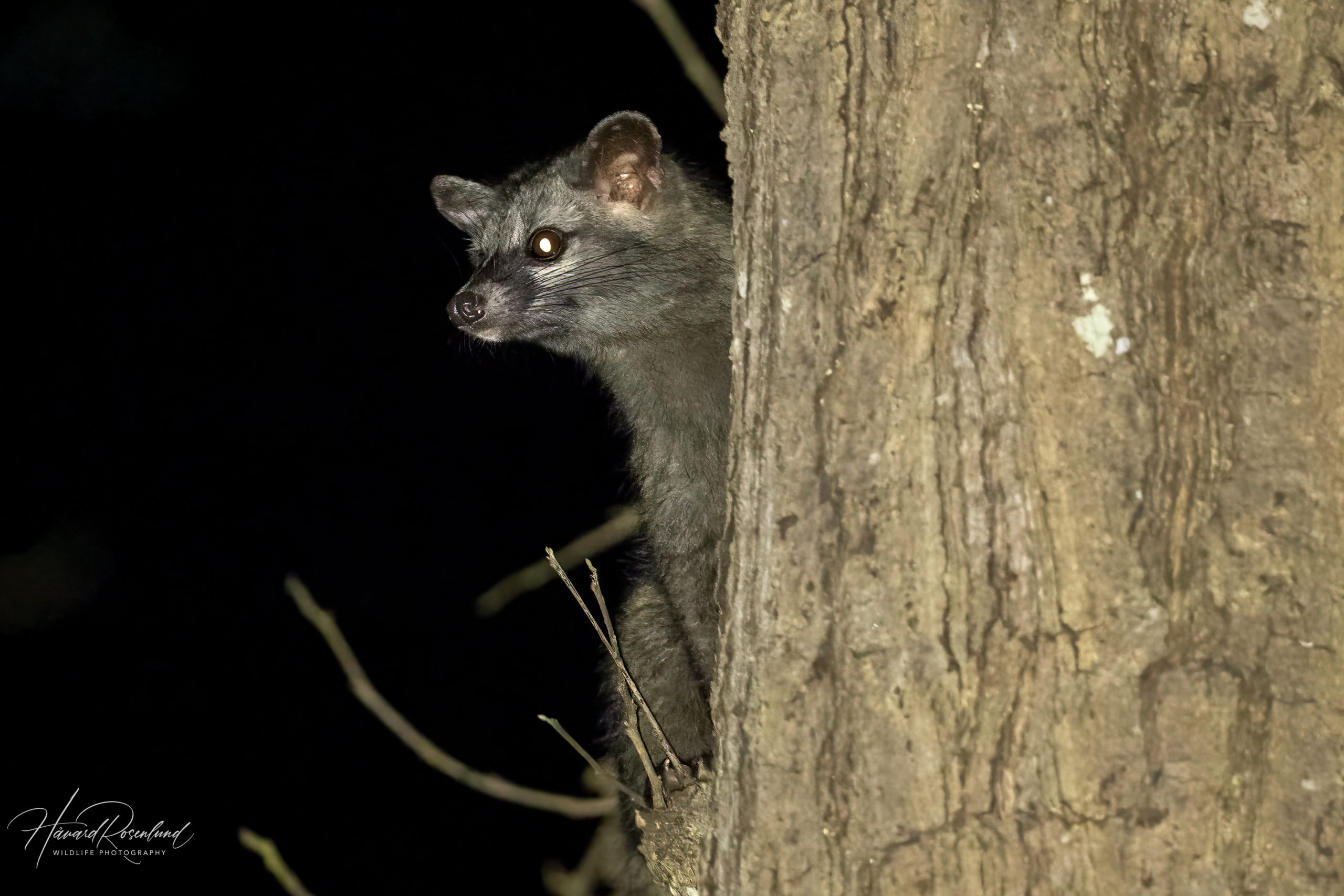Description
The Asian palm civet (Paradoxurus hermaphroditus), also known as the toddy cat and musang, is a small carnivorous mammal native to South and Southeast Asia. This species is characterized by its elongated body, short legs, and a tail that is nearly as long as its body. Adults typically weigh between 2 to 5 kg (4.5-11.0 lbs) and measure about 53 to 71 cm (21-28 in) in body length, with the tail adding an additional 48 to 61 cm (19-24 in). The fur is coarse and greyish with black markings, including a distinctive facial mask and spots or stripes along the body.
The Asian palm civet has recently been separated from the southern palm civet (Paradoxurus musanga) in Indochina and the Sunda Islands, and the Philippine palm civet (Paradoxurus philippensis) in Borneo and the Philippines, based on genetic and morphological differences.
Diet & habitat
Asian palm civets are highly adaptable and can thrive in a variety of habitats, including forests, plantations, and urban areas. They are primarily nocturnal and arboreal, often found in trees. Their diet is omnivorous, consisting of fruits, berries, and small vertebrates like rodents and birds, as well as insects. They are particularly known for feeding on coffee cherries, and the beans that pass through their digestive system are used to produce the highly prized Kopi Luwak coffee. Palm civets use their sharp teeth to peel the skin of fruits and have a keen sense of smell to locate food.
Behavior
The Asian palm civets are solitary and nocturnal, typically spending their days sleeping in trees or dense foliage. They are excellent climbers and use their agility to move through the canopy in search of food. While generally solitary, they communicate through scent marking and vocalizations, such as growls and hisses, to establish territory and ward off intruders. Palm civets have a well-developed anal scent gland, which they use to mark their territory with a strong-smelling secretion.
Reproduction
Asian palm civets can breed throughout the year, and they typically breed twice a year. Females give birth to litters of 2-5 young after a gestation period of about 60-70 days. The young are born blind and helpless but develop quickly, starting to eat solid food at around 3 weeks old and becoming independent by the age of 3 months. Parental care is provided mainly by the mother, who will move her young to new locations to protect them from predators. The life expectancy of the Asian palm civet in the wild is around 15-20 years.
Status
The Asian palm civet is currently listed as least concern by the IUCN Red List. However, it faces threats from habitat destruction, hunting, and the wildlife trade. Deforestation and the conversion of land to agriculture reduce their natural habitats, while they are also hunted for their meat and the production of Kopi Luwak. Conservation efforts are needed to ensure that their populations remain stable, including habitat preservation and regulation of hunting practices.






